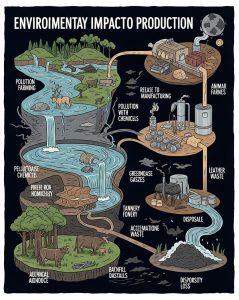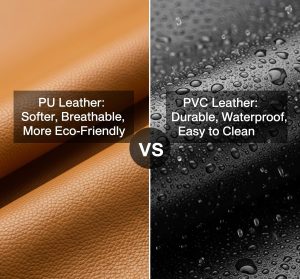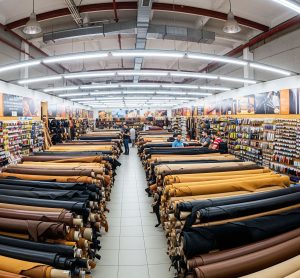Introduction: PU Leather—Safe Style or Hidden Danger to humans?
なめらかなPUレザーのソファや流行のジャケットに見とれて、"これって本当に安全なの?"と思ったことはありませんか?あなただけではありません!しかし PUレザー PUレザーは本革の代替品として急速に普及し、無害で手頃な価格のスタイルを提供していますが、その安全性についての懸念が浮上しています。PUレザーは本当にあなたの家やワードローブに無害な選択肢なのでしょうか、それともその滑らかな表面の下に隠れた危険が潜んでいるのでしょうか?この記事では、PUレザーが見かけほど無害かどうか、科学的根拠、安全性、そして消費者としてのあなたにとっての意味を探ります。ネタバレ見た目だけじゃない
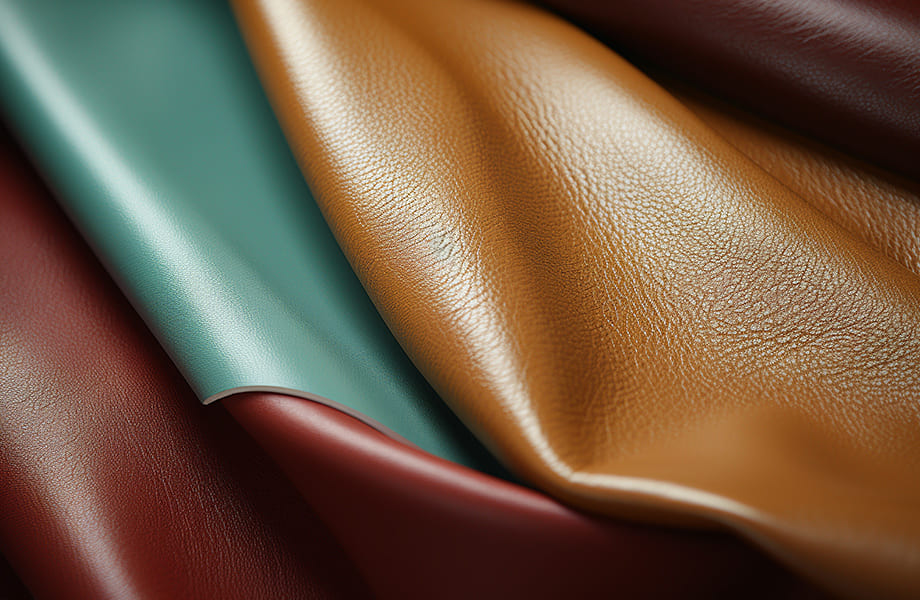
PUレザーの安全性:事実か虚構か?
PUレザー(ポリウレタンレザー)は、本革に代わる安全で環境に優しいレザーとしてよく販売されています。PUレザーは、動物性レザーに関連する環境的・倫理的な懸念を回避していることは事実ですが、その安全性については疑問が残ります。PUレザーは本当に無害な素材なのでしょうか、それとも隠れたリスクがあるのでしょうか?一般的に、PUレザーは家具、衣類、アクセサリーなどの製品に日常的に使用する分には安全であると考えられています。通常の条件下では有害な毒素を放出しないため、他の合成素材と比較して安全な選択肢となっています。しかし、その製造工程とオフガス(空気中への化学物質の放出)の可能性は、重要な考慮事項をもたらします。
化学物質を分解:PUレザーには何が含まれているのか?
PUレザーの製造には、ポリエステルやコットンなどの布地をポリウレタンの層でコーティングする必要があります。ポリウレタン自体は、ジイソシアネートやポリオールなどの化学物質を結合させて作られるポリマーで、特に製造時には毒性が懸念されます。PUレザーが適切に製造された場合、化学物質は結合され、反応状態ではなくなるため、完成品は一般的に消費者にとって安全です。しかし、低品質のPUレザーには、時間の経過とともに揮発性有機化合物(VOC)を放出する可塑剤や添加剤が含まれていることがあります。VOCは多量に吸い込むと有害になる可能性がありますが、ほとんどの高品質PUレザー製品はこのような排出を最小限に抑えるように設計されており、家庭や身の回り品に使用しても安全です。
is pu leather safe for baby?
Traditional environmentally friendly leather contains chemical solvents such as dimethylformamide (DMF). We can smell the odor it releases in the air, and long-term inhalation will cause certain harm to the body; At this time, we need to choose environmentally friendly water-based PU leather, solvent-free PU leather, and food-grade silicone leather fabrics as the first choice for home or fashion accessories, because they do not contain DMF, reduce VOCs emissions, not only improve indoor air quality, but also make the product itself safer for direct contact. When choosing products, you must choose baby-grade or authoritatively certified products
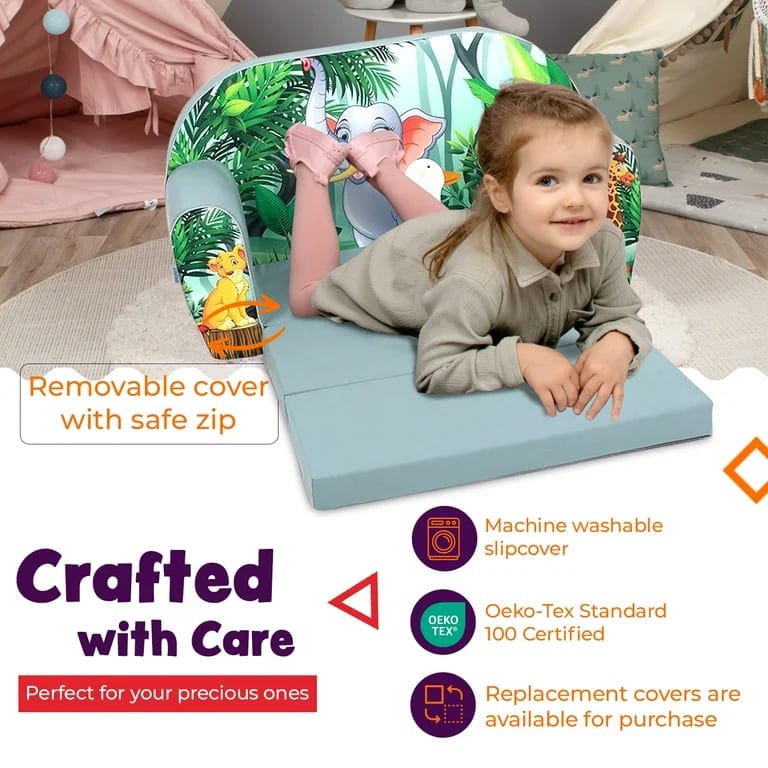
PU Leather and Health: Should You Be Concerned?does pu leather cause cancer?
ほとんどの消費者にとって、PUレザー製品は、一般的な環境で使用する場合、ほとんどリスクはありません。PUレザーに関する健康上の懸念は、通常、特に低品質の製品における化学物質のオフガスから生じます。これらの化学物質は臭いを発したり、敏感な人にわずかな刺激を与えるかもしれませんが、毒性のレベルは一般的に低いです。PUレザーは、安全基準と環境基準を遵守している信頼できるメーカーから購入することが重要です。一般的に、PUレザーは日常使いに安全な素材であり、本革に代わる手頃な価格で倫理的な代替品を提供し、ほとんどの人にとって健康上のリスクは最小限に抑えられています。
環境に優しいか、有害か?PUレザーの影響を検証
PUレザーはポリウレタン・レザーの略で、動物を使用しない製造工程により、本革に代わる環境に優しいレザーとしてよく販売されています。しかし、その環境への影響は見た目以上に複雑です。PUレザーは、化石燃料に由来する合成ポリマー、ポリウレタンから作られています。ポリウレタンの製造には化学物質が使用され、特に製造や廃棄の際に適切に管理されなければ、環境に有害な影響を与える可能性があります。PUレザーは畜産の倫理的問題を回避していますが、その生産は再生不可能な資源に依存しており、プラスチック汚染の原因となる可能性があります。とはいえ、多くの企業は現在、バイオベースのポリウレタンを使用したり、材料をリサイクルしたりして、PUレザーをより持続可能なものにし、全体的な環境フットプリントを減らす方法を模索しています。
家庭におけるPUレザー:日常使用における安全性は?
家庭内での安全性に関して言えば、PUレザーは一般的に通常の使用条件下では無害と考えられています。一度製造されたPUレザーは有害な化学物質を放出しないため、家具、衣服、車の内装などの日常品に安全に使用できます。しかし、PUレザー製品の中には、製造中や極端な熱にさらされたときに揮発性有機化合物(VOC)を放出し、室内空気汚染の原因となるものがあります。通常、放出されるVOCのレベルは低く、換気の良い空間では有害ではありません。PUレザーの安全性は製品の品質にも左右されることに注意することが重要です。高品質のPUレザーは、有害な添加物を含んでいたり、有害物質を放出している可能性が低いです。全体的に、PUレザーは通常の使用には安全であると考えられていますが、化学物質への暴露を心配する消費者は、低VOC生産方法を重視する評判の良いブランドの製品を選ぶべきです。
結論PUレザー - スタイリッシュなコンパニオンか、化学的難問か?
さて、PUレザーについてあれこれ語ってきましたが、最終的な結論は?環境フットプリントや動物に害を与えない素材を探しているなら、PUレザーには確かに利点があります。手ごろな価格で、見た目もよく、ほとんどの場合、あなたのリビングルームを密かに有害な荒れ地にすることもありません。確かに、高級ワイン(または本革)のようなエイジングは望めないかもしれませんが、ちょっとしたお手入れで、PUレザー製品は何年もスタイリッシュで罪悪感のない状態を保つことができます。オフガスや化学物質の心配を避けるには、高品質が鍵です。シックでレザーのようなソファを楽しみながら、本物の牛を使わず、賢く安全でスタイリッシュな選択をしたことに安心してください。




